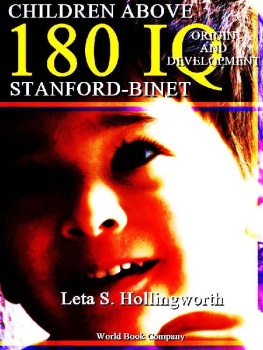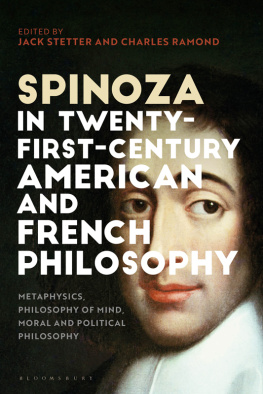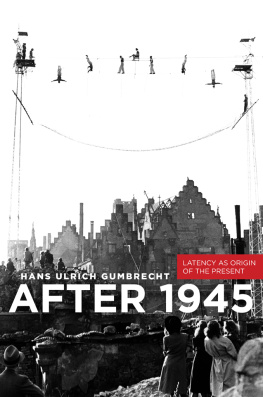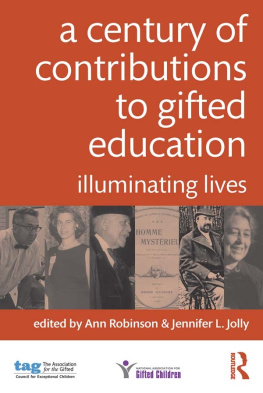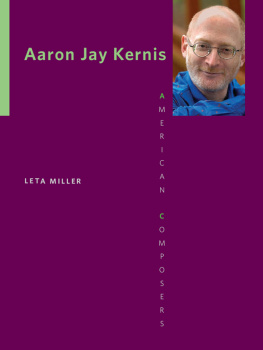Leta Stetter Hollingworth - Children Above 180 IQ Stanford-Binet: Origin and Development
Here you can read online Leta Stetter Hollingworth - Children Above 180 IQ Stanford-Binet: Origin and Development full text of the book (entire story) in english for free. Download pdf and epub, get meaning, cover and reviews about this ebook. year: 1942, publisher: World Book Company, genre: Science. Description of the work, (preface) as well as reviews are available. Best literature library LitArk.com created for fans of good reading and offers a wide selection of genres:
Romance novel
Science fiction
Adventure
Detective
Science
History
Home and family
Prose
Art
Politics
Computer
Non-fiction
Religion
Business
Children
Humor
Choose a favorite category and find really read worthwhile books. Enjoy immersion in the world of imagination, feel the emotions of the characters or learn something new for yourself, make an fascinating discovery.
- Book:Children Above 180 IQ Stanford-Binet: Origin and Development
- Author:
- Publisher:World Book Company
- Genre:
- Year:1942
- Rating:4 / 5
- Favourites:Add to favourites
- Your mark:
- 80
- 1
- 2
- 3
- 4
- 5
Children Above 180 IQ Stanford-Binet: Origin and Development: summary, description and annotation
We offer to read an annotation, description, summary or preface (depends on what the author of the book "Children Above 180 IQ Stanford-Binet: Origin and Development" wrote himself). If you haven't found the necessary information about the book — write in the comments, we will try to find it.
Children Above 180 IQ Stanford-Binet: Origin and Development — read online for free the complete book (whole text) full work
Below is the text of the book, divided by pages. System saving the place of the last page read, allows you to conveniently read the book "Children Above 180 IQ Stanford-Binet: Origin and Development" online for free, without having to search again every time where you left off. Put a bookmark, and you can go to the page where you finished reading at any time.
Font size:
Interval:
Bookmark:
Shortly after the year 1924 Leta S. Hollingworth prepared amanuscript on "Children above 180 IQ (Stanford-Binet)" in whichshe surveyed the material on the topic available up to that dateand added accounts of five cases which she had studied individually.[1] As the years went by she held back the manuscript frompublication and one by one she found seven more cases to beincluded in her list. At the time of her death in 1939 she hadbegun to revise this manuscript, bringing the survey up to dateand adding the new cases. The present book gives as much of thisrevision from her own hand as is available. The Preface andChapters 1, 2, and 3 are as she wrote them. The accounts of thefirst five cases are given just as she originally wrote themup, but to them "editorial supplements" have been added in whichan endeavor has been made to present for each case such data ashave been found in her files, with little in the way of discussionor interpretation.
The seven new cases which the original author had intended toinclude in the manuscript she had not yet written up. For these,therefore, it has been necessary to study the data she hadaccumulated for each child, to secure additional data when andwhere possible, and to present such an account of each as shemight herself have written, patterned after her reports of theearlier cases.
Much is lost that would have been contributed had the author livedto complete her project. She knew these cases intimately and atfirst hand. Some of them she had followed for as long as twentyyears, taking a personal interest in the individual children andtheir problems, advising them, assisting them, continuouslyobserving them, and frequently testing and measuring them.
Particularly inadequate must be the accounts of the laterdevelopment of the individuals herein described, for many of thedetails well known to the author she not committed to paper, sinceshe fully expected to complete the manuscript herself. It is to beregretted that a follow-up study of these recent developmentscould not have been undertaken, and a hope is expressed that thismay yet be done.
The chapters summarizing the group of twelve new cases are whollywithout Leta S. Hollingworth's touch. It seemed desirable, however,to give such a summary as could be made under the circumstances.Had the original author been able to complete her book, we knowthat penetrating light would have been thrown on many of the morepersonal difficulties of these children of rare intelligence. Thisexperience and insight can no longer be recovered. It must sufficeto put on record chiefly the factual data now available, leavingit for future workers to follow up, if it should seem desirable,the subsequent career and destiny of the individuals whose earlydevelopment and background are herein reported. Identification ofthese children is not made in this book, but the necessary factsfor this purpose are on file and identification can be made at anytime in the interests of educational research.
The third section of this book as originally outlined by Leta S.Hollingworth was to have dealt with general principles and withthe social and educational implications of the study of childrenof very high intelligence. Up to the time of her death nothingof this character had been written by her explicitly, but throughoutthe years in which her projected book was developing she wrote anumber of papers and reports bearing on the subject, and thesewere published from time to time in technical journals. It is wellknown that the content of these papers was dictated by her study ofsuch cases as are herein reported, by her familiarity with thereports of other students in this field, and by her own veryconcrete and long experience in the organization and conductof two experimental projects in the schools of New York City.It is, in fact, likely that the final chapters she had in mindfor this book would have been a reorganization of the conclusionsset forth in these articles.
Consequently, the last five chapters of this book, instead of beingan attempt to guess at what the author might have said in them, areall from her own hand. They are either selections from or completereproductions of papers she had published on what she consideredto be the implications of her observations of children of rareintelligence.
The publication of this book has been made possible by fundsgranted by the Carnegie Corporation of New York. That Corporationis not, however, the author, owner, publisher, or proprietor ofthis publication, and it is not to be understood as approving byvirtue of its grants any of the statements or views expressedherein.
Harry L. Hollingworth
Barnard College
Columbia University, New York
[1] Chapter 9 of Gifted Children, published in 1926, bears thetitle "Children Who Test above 180 IQ (Stanford-Binet)." Some ofthe cases described more fully in the monograph manuscript arealso sketched in that chapter.
1. THE CONCEPT OF INTELLECTUAL GENIUSConcepts of the Ancients, Dictionary Definitions, Concepts ofGenius, Miscellaneous Observations Tending to Define Characteristicsof Genius, Speculation and Comment Concerning Genius
2. EARLY SCIENTIFIC STUDY OF EMINENT ADULTSOrigin of Eminent Adults, Yoder's Study, Terman's Inferencesfrom Biography
3. PUBLISHED REPORTS ON TESTED CHILDRENModern Approach to the Study of Ability, Binet's Method, The Rangeof Intellect above 180 IQ, Children Observed before the Era ofBinet, Children Who Test above 180 IQ by Binet-Simon Tests, ChildrenWho Test above 180 IQ by Stanford-Binet Tests, Generalizations
4. CHILD A
Family Background, Preschool History, School History, Judgments
of Teachers, Mental Measurements, Traits of Character, Physical
Measurements and Health, Miscellaneous Characteristics
5. CHILD B
Family Background, Preschool History, School History, Traits of
Character, Judgments of Teachers, Mental Measurements, Physical
Measurements, Miscellaneous Characteristics
6. CHILD C
Family Background, Preschool History, School History, Traits of
Character, Mental Measurements, Physical Measurements, Later
School History
7. CHILD D
Family Background, Preschool History, Traits of Character, Mental
Measurements, Physical Measurements and Health, Miscellaneous
Characteristics, School History
8. CHILD E
Family Background, Early History, School Achievement, Mental
Measurements, Social Habits, Tastes, etc., Later Mental Measurements,
Later Physical Measurements, Later Scholastic Records, Extracurricular
Activities, Teachers' Comments, Summary up to 1921, Eventual
Scholastic Records, Researches of E, Summary of Development
9. CHILD F
Family Background, Preschool History, Early School History, Early
Test Scores, Home Rating, Miscellaneous Characteristics, Later
Educational Career
10. CHILD G
Family Background, Educational History, Early Mental Tests,
Later Test Records, Traits of Character, Physical Measurements,
High School Record, G's Brother's Record
11. CHILD H
Family Background, Preschool History, Mental Measurements, Physical
Measurements, Intellectual Ability
12. CHILD I
Family Background, Preschool History, Early Educational History,
Mental Measurements, Physical Measurements and Health, Miscellaneous
Characteristics
13. CHILD JFamily Background, Childhood Characteristics, Later Mental Tests
14. CHILD K
Family Background, Early Development, Mental Measurements, Physical
Measurements, Later Educational Progress
Font size:
Interval:
Bookmark:
Similar books «Children Above 180 IQ Stanford-Binet: Origin and Development»
Look at similar books to Children Above 180 IQ Stanford-Binet: Origin and Development. We have selected literature similar in name and meaning in the hope of providing readers with more options to find new, interesting, not yet read works.
Discussion, reviews of the book Children Above 180 IQ Stanford-Binet: Origin and Development and just readers' own opinions. Leave your comments, write what you think about the work, its meaning or the main characters. Specify what exactly you liked and what you didn't like, and why you think so.

